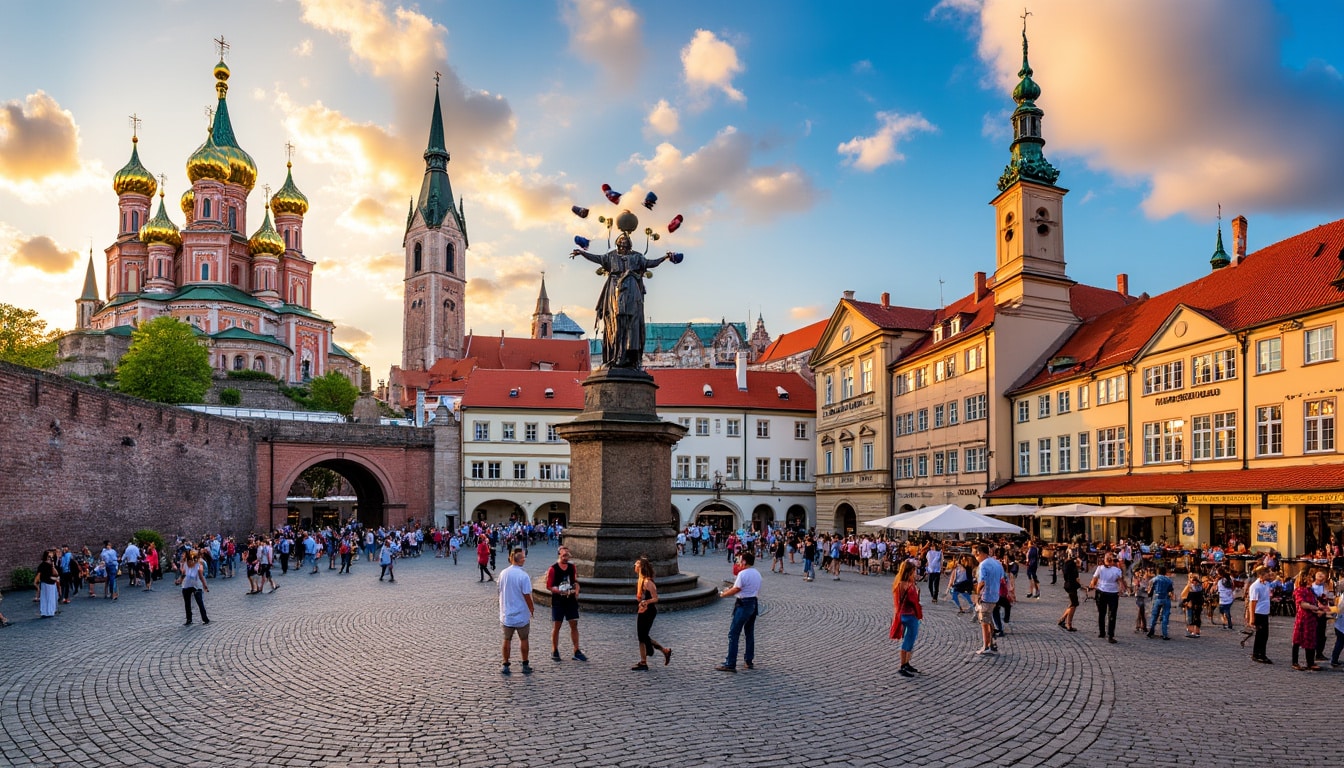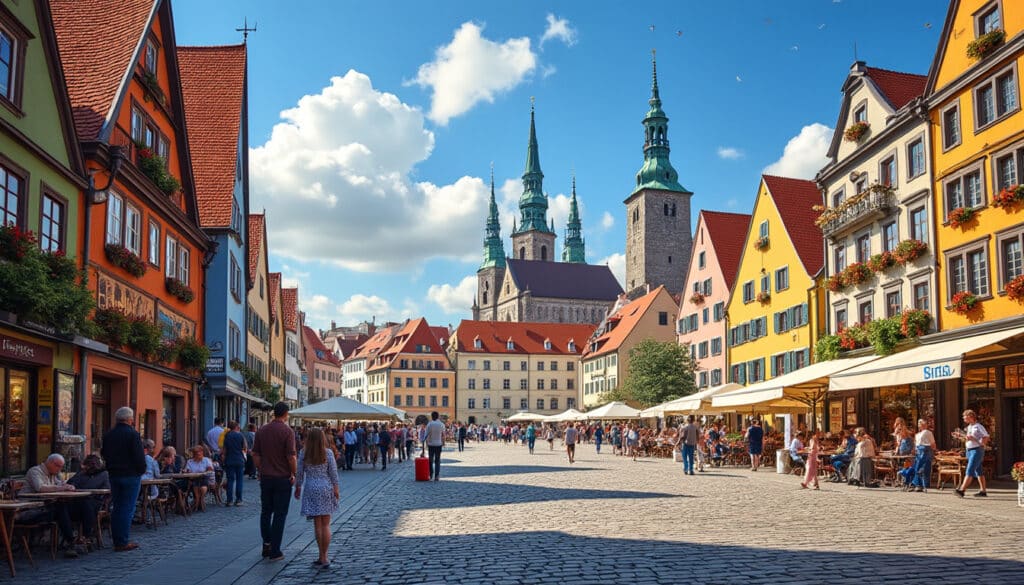As one wanders through the enchanting streets of Tallinn, Estonia’s capital, they are met with a city that is a tapestry of ancient and modern elements woven together through its architecture and urban features. Known for its well-preserved medieval Old Town, Tallinn also offers a plethora of other architectural styles and urban experiences that reflect its diverse history and vibrant culture. From the historical significance of the Hanseatic League to the modern innovations in the Rotermann Quarter, Tallinn’s buildings and cityscape tell stories of past grandeur and future possibilities. This exploration delves into the different architectural highlights around Tallinn, offering a glimpse into its rich heritage and dynamic urban landscape.
Tallinn Old Town: A Medieval Marvel
The core of Tallinn’s charm lies in its Old Town, a district that boasts some of the most well-preserved medieval architecture in Europe. When you enter this area, the cobblestone streets and ancient buildings transport you back to a time when Tallinn was a crucial hub of the Hanseatic League. Established as a city in 1248, Tallinn’s Old Town reached its peak between the 14th and 16th centuries, a period that left behind architectural treasures that still stand today.
The centerpiece of the Old Town is undoubtedly the Tallinn Town Hall, a stunning Gothic structure completed in 1404. Its grandeur is complemented by the intricate spires and the expansive town square where markets and festivities often take place. Another architectural gem is the Great Guild Hall, which showcases walls that have withstood the test of time, standing as a testament to the city’s prosperity during the medieval era.
- 🏰 Tallinn Town Hall: A Gothic architectural masterpiece.
- 🎨 Great Guild Hall: A window into medieval commerce and culture.
- 🕍 St. Olaf’s Church: Once the world’s tallest building.
As you explore, the juxtaposition of buildings in the Old Town tells a story of social stratification and history. While commoners inhabited the lower town, the nobility and foreign conquerors made their homes up on Toompea hill. This division is evident in the variety of architectural styles present, making Tallinn Old Town a rich tapestry of cultural history. From Gothic to Baroque, each building showcases the city’s multifaceted past and its role as a melting pot of northern Europe.
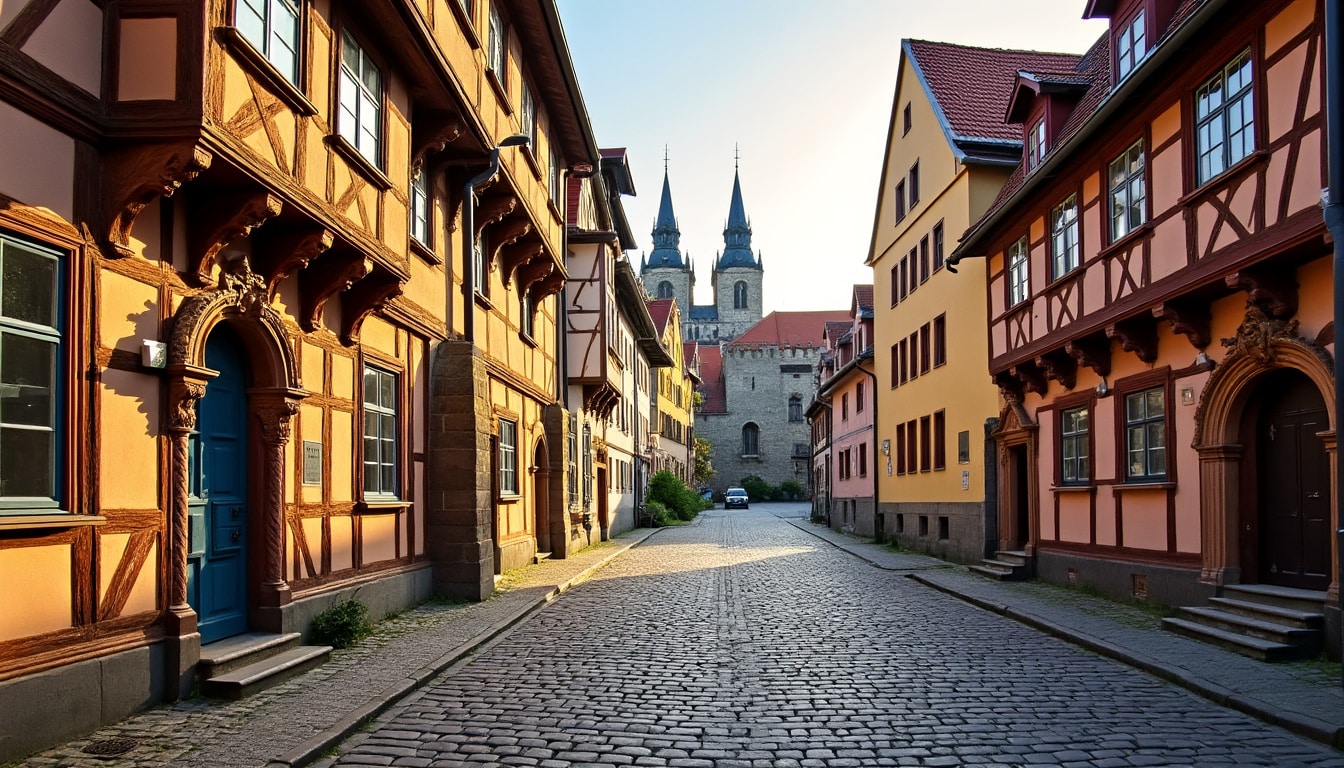
The Grit and Grace of Kalamaja
Moving beyond the Old Town, one finds the Kalamaja district, a neighborhood that speaks volumes of Tallinn’s modern evolution. Originally a simple fishing village, Kalamaja transformed into an industrial hub in the early 20th century. Its streets became lined with large wooden tenements built for factory workers, many of which still reference a rustic industrial charm.
Today, Kalamaja is a trendy neighborhood teeming with artists, young professionals, and families. The district retains its distinctive wooden architecture, yet it has embraced modernity with a range of hip cafes, boutiques, and creative spaces. This area has emerged as one of the most vibrant parts of Tallinn, combining old industrial vibes with a fresh, youthful energy.
- 🎨 Vibrant street art: Adds color and creativity to the industrial facades.
- ☕ Hip cafes: Popular gathering spots for locals and tourists alike.
- 🏚️ Wooden tenements: Historical buildings with a modern twist.
Yet there are signs of gentrification as new apartments rise amongst historical buildings, subtly altering the neighborhood’s socio-economic landscape. Despite these changes, the essence of Kalamaja remains, highlighting the coexistence of tradition and progress in Tallinn’s cityscape.
Kadriorg: An Affluent Legacy
Across town from Kalamaja lies the opulent district of Kadriorg, a neighborhood that reflects Tallinn’s affluent side. Established by Russian Tsar Peter the Great in the early 18th century, Kadriorg stands out for its elegant architecture and lush greenery. The jewel of Kadriorg is undoubtedly the Kadriorg Palace, an exquisite baroque residence designed by Italian architect Nicola Michetti. This palace, with its vibrant colors and intricate gardens, remains the sole Baroque palace in the region, embodying the grandeur associated with Tallinn’s aristocratic past.
The streets of Kadriorg are embellished with historic villas and mansions, many of which offer a glimpse into Estonia’s romantic history as a resort destination for the elite. Despite their age, these buildings have retained their elegance, serving as both residences and cultural hubs.
- 🌳 Kadriorg Park: A sprawling green oasis perfect for leisurely strolls.
- 🎨 Art Museum of Estonia: Showcases a fine collection of local and international art.
- 🏛️ Kadriorg Palace: Features stunning interiors and manicured gardens.
As you wander through Kadriorg’s tree-lined avenues, the fusion of art, history, and nature becomes evident, offering a tranquil retreat amidst the bustling city. Whether admiring the architectural beauty of Kadriorg or enjoying a peaceful walk in its park, this district exemplifies the rich cultural tapestry that defines Tallinn.
The Brutalist Echo of Linnahall
Heading towards the port, the landscape of Tallinn changes dramatically with the arrival of the imposing Linnahall. This vast concert hall, a product of Soviet-era design, stands as a relic of Estonia’s time under Soviet influence. Completed ahead of the 1980 Moscow Summer Olympics, it hosted events for the Olympic sailing competitions held in Tallinn.
Linnahall’s brutalist architecture is a stark reminder of the utilitarian design that characterized much of the Soviet Union’s architectural legacy. Built predominantly of concrete, its massive structure now serves as a reminder of a bygone era. While the Linnahall once served as a cultural hub, its impractical size and the high cost of maintenance led to its closure in 2010.
- 🏢 Monumental structure: A classic example of Soviet brutalism.
- ⚓️ Proximity to the port: Initially designed for Olympic use.
- 🚧 Current state: Largely abandoned but rich in historical significance.
Visitors to the Linnahall can walk around sections of this concrete behemoth, reveling in its architectural enormity and reflecting on Tallinn’s Soviet-era challenges. The site serves as a symbol of Estonia’s complex history and the transformative journey of its built environment towards modernity.
Rotermann Quarter: A Modern Urban Renaissance
Between the Old Town and the port, the Rotermann Quarter unfolds as a testament to Tallinn’s innovative spirit and urban regeneration. What was once a desolate area filled with disused industrial buildings has transformed into a vibrant commercial and cultural hub. This modern urban enclave harmonizes historical traces with cutting-edge architectural solutions, creating a lively urban atmosphere.
Historically, the Rotermann Quarter featured factories and warehouses that were integral to Tallinn’s industrial growth. Now, these buildings have been skillfully rejuvenated to house shops, restaurants, and cultural venues. The area exemplifies a forward-looking vision, demonstrating how old industrial spaces can be repurposed into thriving modern centers.
- 🛍️ Chic shops: Offering a unique blend of local and international brands.
- 🍽️ Gourmet restaurants: Catering to diverse culinary tastes.
- 🎭 Cultural venues: hosting art exhibitions and performances.
The name Rotermann Quarter has become synonymous with the spirit of renewal and creativity in Tallinn. This district’s success is a beacon to other cities aiming to balance the preservation of historical heritage with the demands of contemporary urban living. The transformation evident in Rotermann Quarter has revitalized the community and attracted visitors from all over, making it a cornerstone of Tallinn’s modern identity.
Seaplane Harbour: Nautical Wonder
Rounding off the urban treasures of Tallinn is the intriguing Seaplane Harbour, a rare fusion of maritime history and modern architecture. Originally constructed as a seaplane hangar by the Russian Empire, the site now functions as the Estonian Maritime Museum. Its innovative architectural design integrates vast open spaces with cutting-edge exhibitions about Estonia’s nautical past.
The Seaplane Harbour boasts interactive displays and a vast collection of historical vessels, including the famous Lembit submarine. This site not only highlights Estonia’s maritime significance but also showcases the country’s inventive approach to museum architecture.
- 🛥️ Lembit submarine: A glimpse into submarine technology.
- ⚓️ Maritime exhibits: Celebrate Estonia’s nautical heritage.
- 🌊 Interactive installations: Engage visitors of all ages.
With its location near the water and its unique blend of history and innovation, the Seaplane Harbour is a must-visit for those keen on exploring Tallinn’s diverse architectural landscape. This site is more than a museum—it is a pivotal part of the city that connects the past with the vibrant future of Tallinn.
FAQ: Essential Questions About Tallinn’s Architecture
What makes Tallinn’s Old Town unique?
The Old Town of Tallinn is renowned for its well-preserved medieval architecture, with cobblestone streets and Gothic buildings intact since the time of the Hanseatic League.
How has modern architecture influenced Tallinn?
Modern architecture in Tallinn has transformed areas like the Rotermann Quarter, blending innovative designs with historical structures to create contemporary urban environments.
Why is the Linnahall important?
The Linnahall is a significant example of Soviet-era architecture in Tallinn, showcasing utilitarian design and symbolizing the historical Soviet influence.
What can visitors expect at the Seaplane Harbour?
The Seaplane Harbour offers an engaging experience with maritime exhibits, including the Lembit submarine, housed within an architecturally unique former seaplane hangar.
How does architecture in Tallinn reflect its history?
The architecture of Tallinn displays layers of history, from medieval market hubs to modern creative districts, embodying the city’s historical evolution and cultural richness.
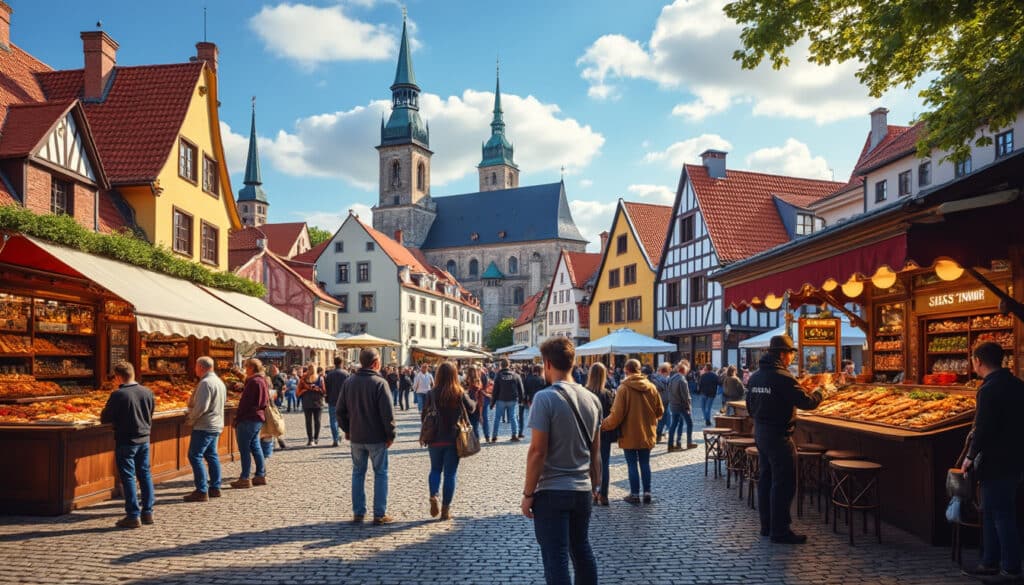
Fun Facts & Curiosities About Tallinn
The picturesque capital of Estonia, Tallinn, is a treasure trove of history, innovation, and delightful surprises. Whether you’re fascinated by medieval architecture or intrigued by modern technological advancements, Tallinn offers a blend of old-world charm and futuristic innovation. From its…
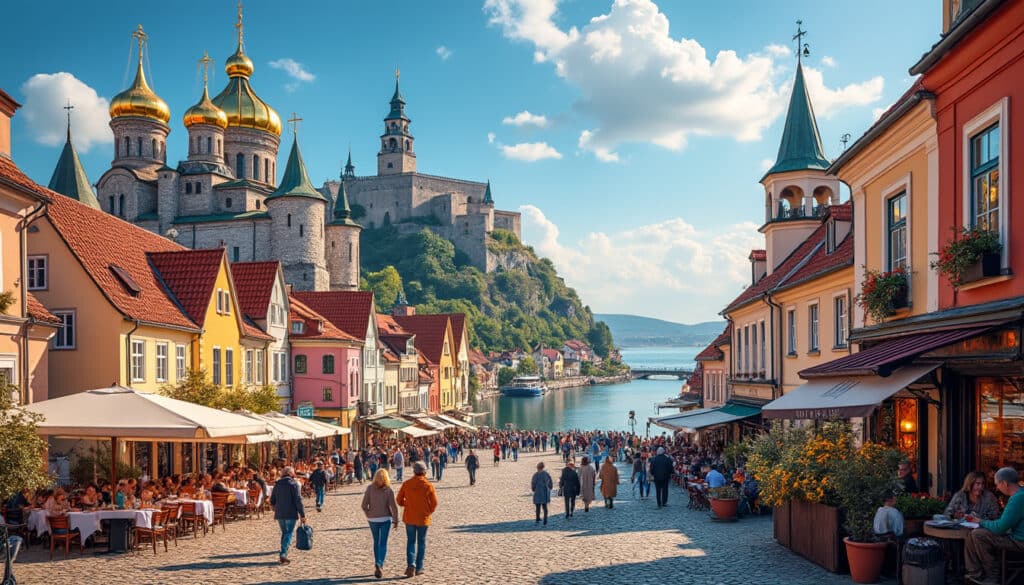
Welcome to Tallinn, the charming capital of Estonia, a city where medieval history and modern innovation blend seamlessly. From its historical streets and vibrant startup scene to its cultural festivals and picturesque landscapes, Tallinn is a city full of compelling…
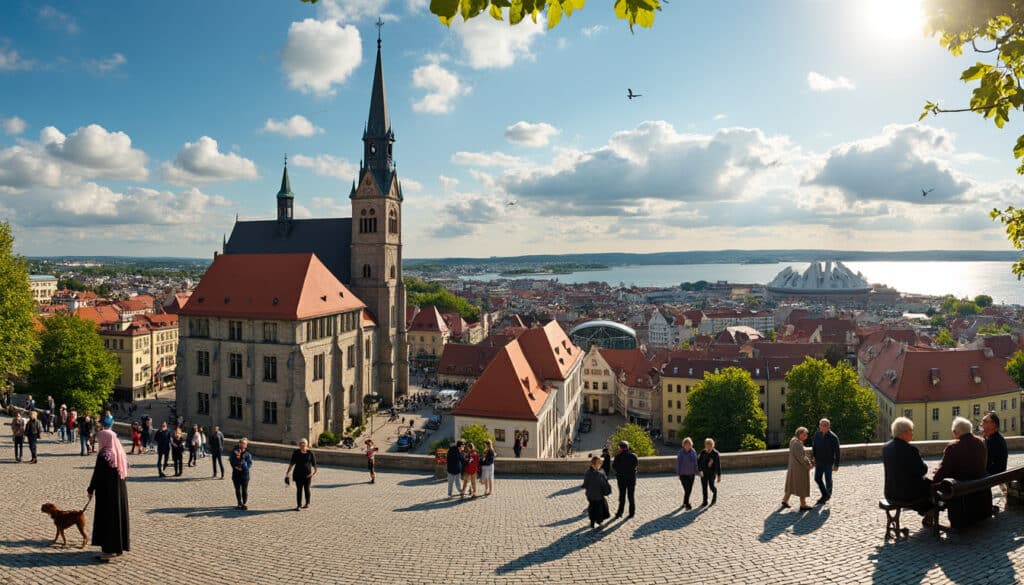
Demographics and geography of Tallinn
As the capital of Estonia, Tallinn stands as a beacon of Baltic history, culture, and modern innovation. Nestled on the northern coast of the country, facing the Gulf of Finland, this vibrant city is more than just its medieval charm—it…
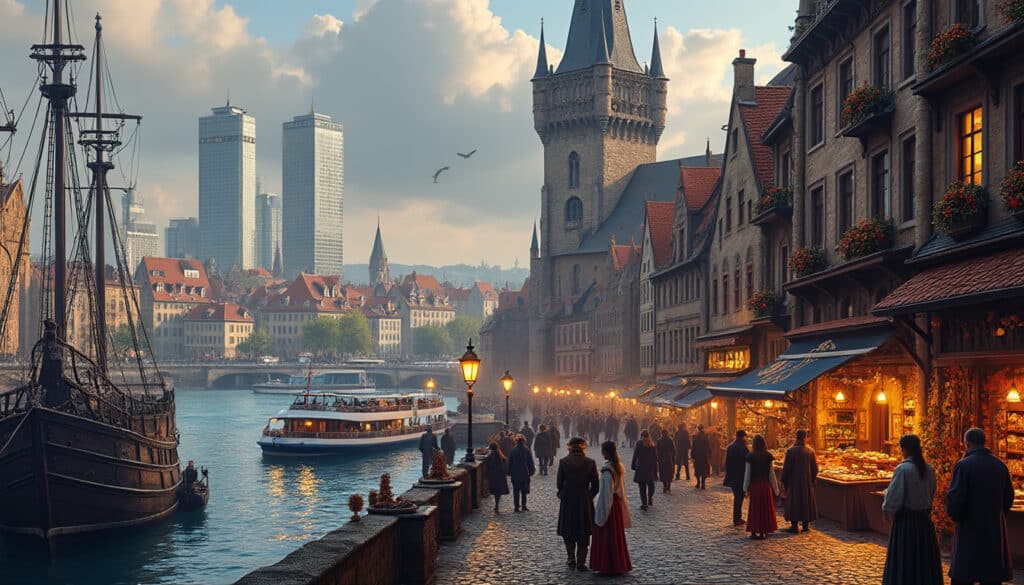
Enveloped in a rich tapestry of history and culture, Tallinn stands as a glittering jewel of Northern Europe. As one of the most captivating cities on the shores of the Baltic Sea, its medieval charm coupled with modern vibrancy provides…
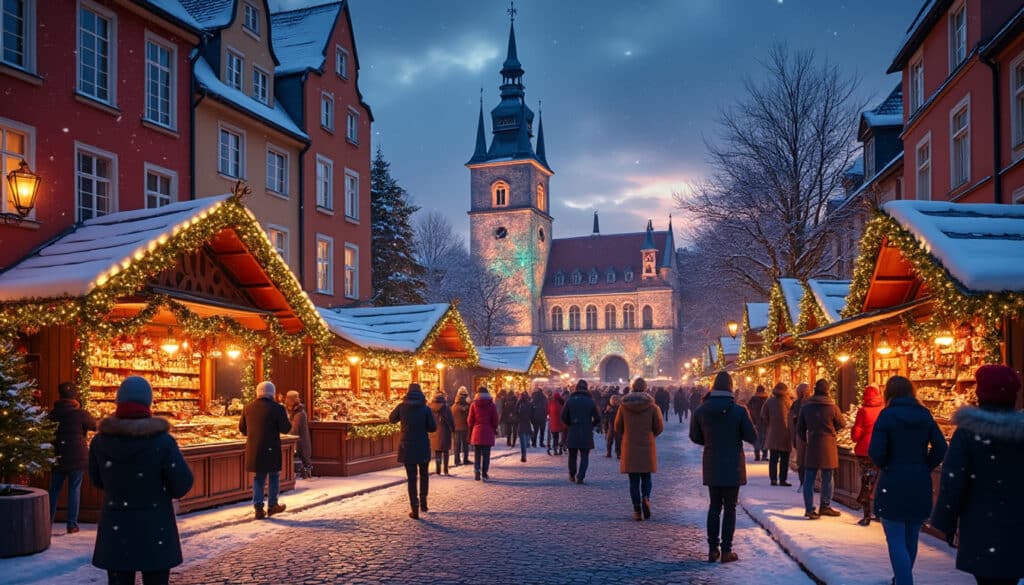
Holidays and celebrations in Tallinn
Explore the enchanting city of Tallinn, Estonia, where history and modernity blend seamlessly to offer myriad holidays and celebrations. From the vibrant Tallinn Christmas Market to significant national holidays, the capital of Estonia opens its heart to both locals and…
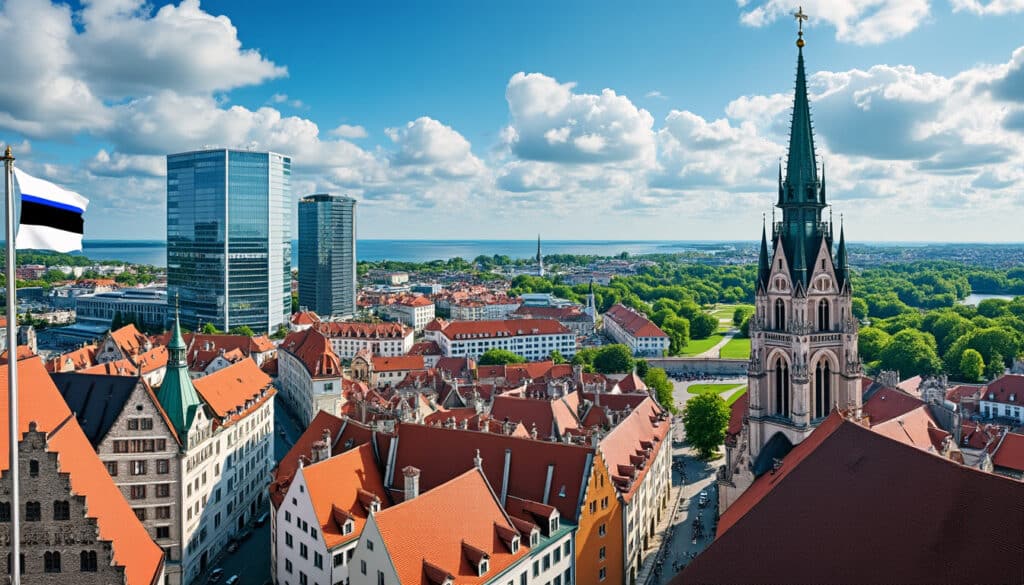
Language and spelling of Tallinn
Tallinn, the capital city of Estonia, is not only a hub of architectural beauty and cultural richness but also an intriguing subject when it comes to its language and spelling. Nestled on the northern coast of the country, this city…
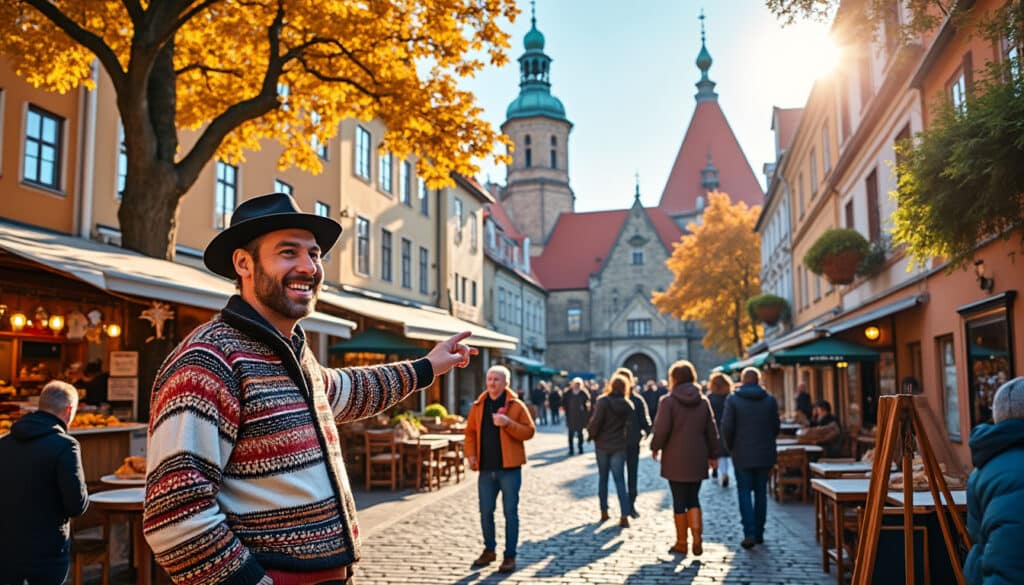
Local tips for tourists in Tallinn
Planning a trip to Tallinn, Estonia’s charming capital, might seem daunting given its rich offerings and relatively small size. Tallinn is a delightful blend of medieval architecture, modern innovation, and cultural enchantment. With a friendly population and rich history, this…
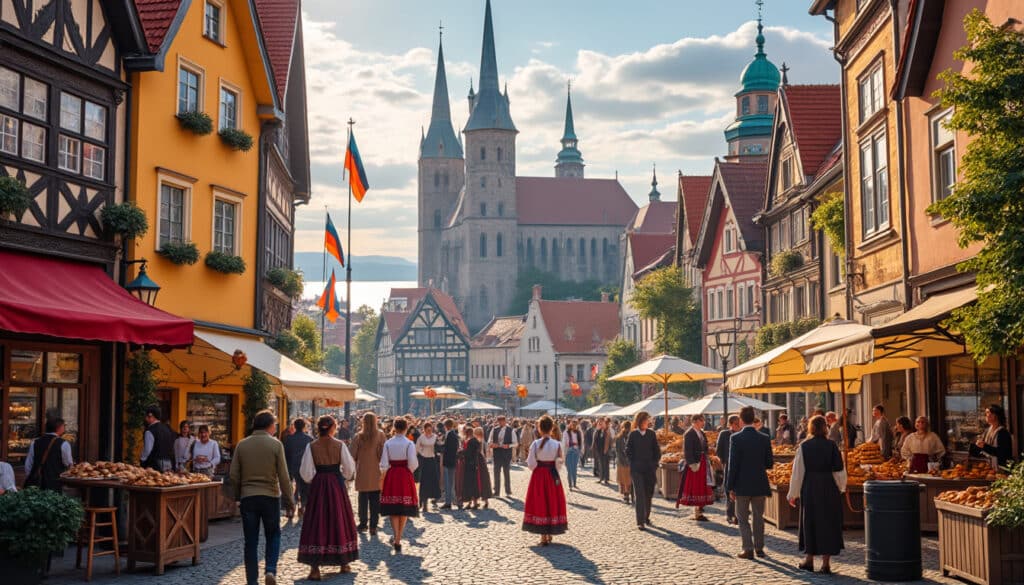
Names, flags, and identity of Tallinn
With its captivating blend of historical depth and modern dynamism, Tallinn, the capital city of Estonia, stands as a significant European hub. It’s a place where the past and present seamlessly coexist, showcased vividly through its many names and emblems.…
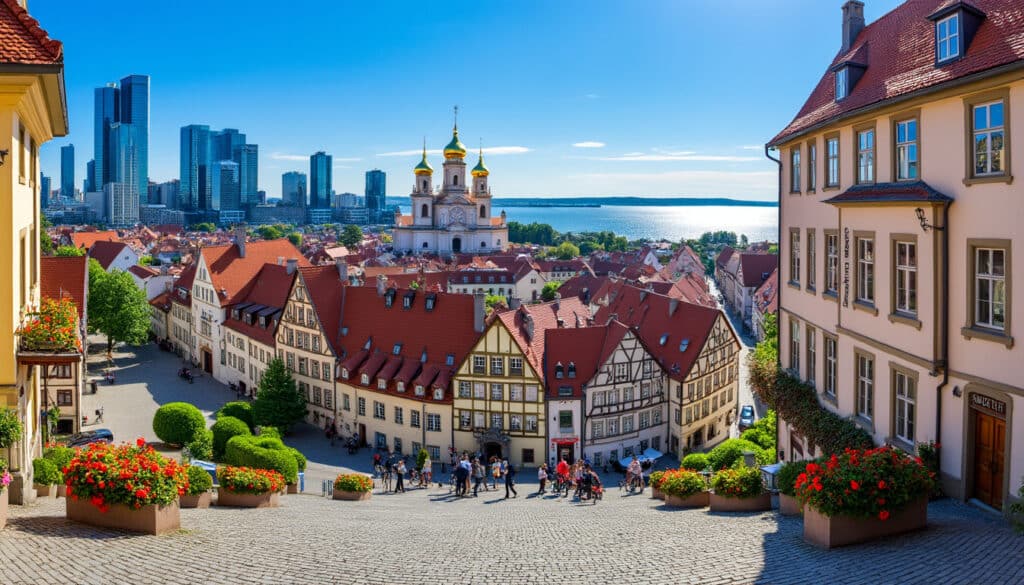
Reputation and identity of Tallinn
Tallinn, the capital city of Estonia, is a vibrant blend of medieval charm and digital innovation that captivates travelers from around the globe. Nestled on the northern coast of the Baltic Sea, this picturesque city has become a beacon of…
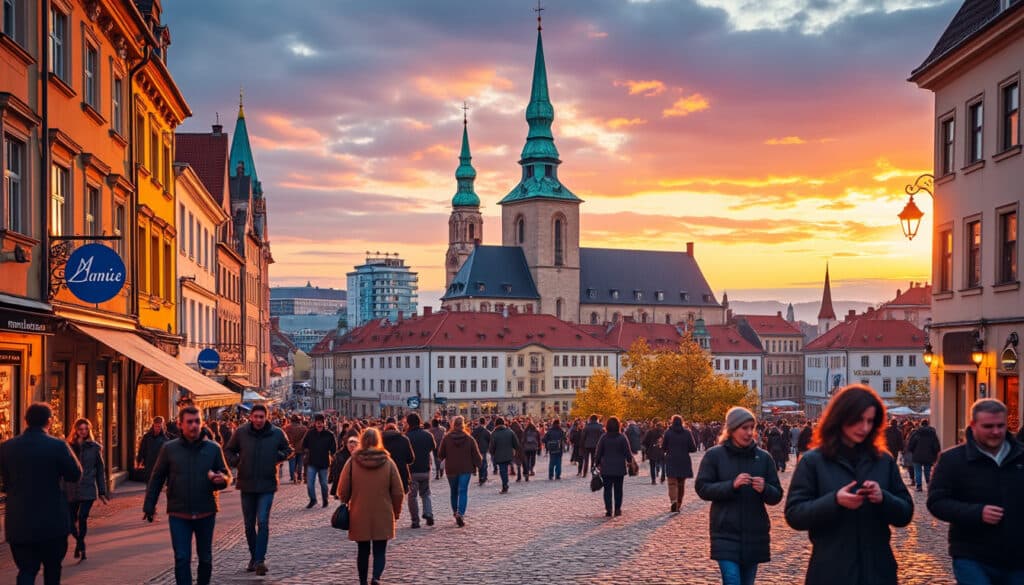
Located at the northeastern edge of the Baltic Sea, Tallinn, the capital of Estonia, is a city where time embraces both tradition and modernity. Known for its charming medieval old town and vibrant cultural scene, Tallinn is a city steeped…
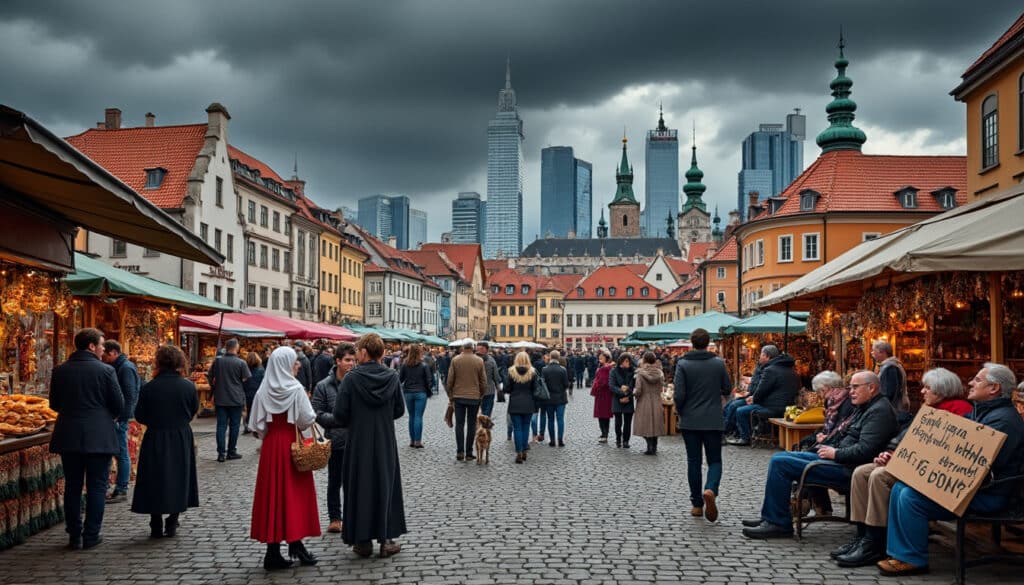
Unusual facts and social issues in Tallinn
The capital city of Estonia, Tallinn, offers a unique blend of medieval charm and futuristic innovation, making it a fascinating destination for both tourists and residents alike. Hidden within its cobblestone streets and modern advancements lie intriguing secrets and social…
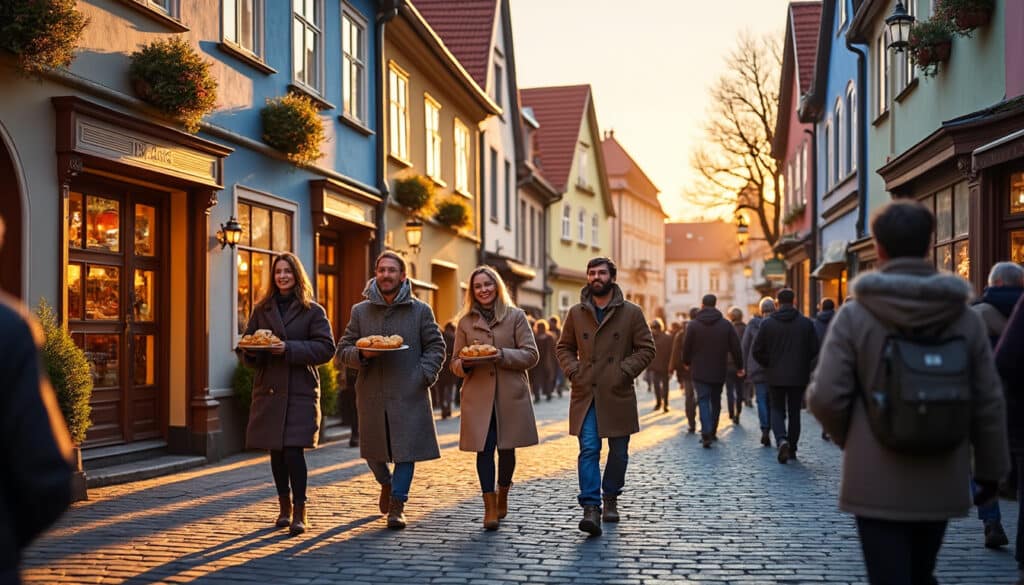
What does Tallinn look, smell, feel like?
Nestled in the northeastern part of Europe, Tallinn, the capital of Estonia, is a city that effortlessly marries the charm of its medieval past with the vibrancy of its present-day innovations. Visitors often speak of its cobblestone streets that wind…

